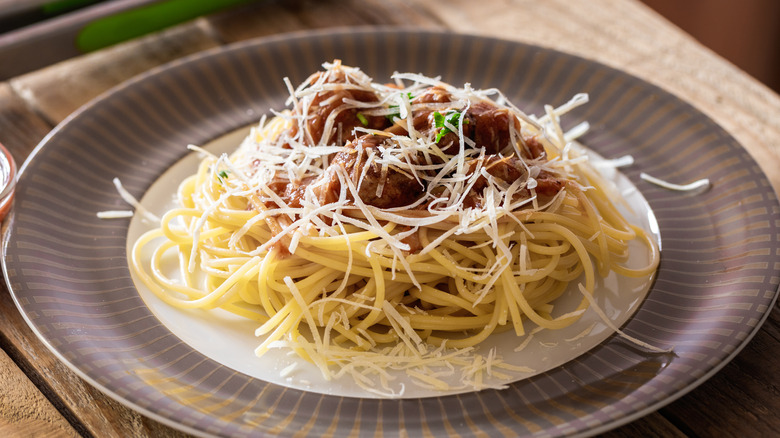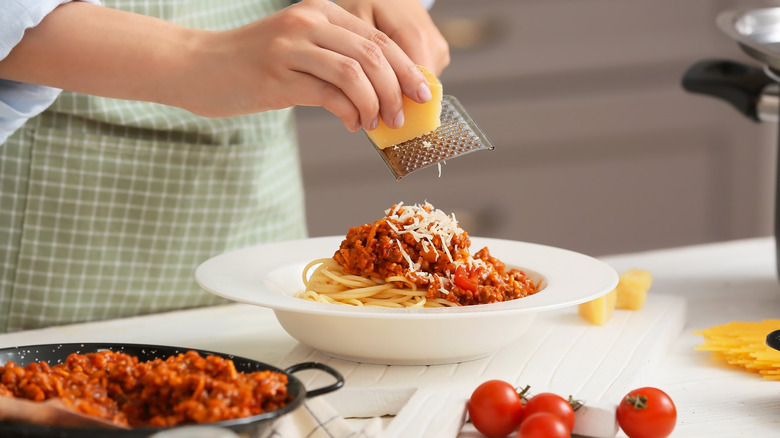It's Best To Avoid Adding Pre-Grated Cheese To Pasta
We all know that fresher is usually better, but when it comes to pre-grated cheese, that rule of thumb really holds true. It's not purely for taste reasons, although that's also a factor. When a cheese is grated far in advance and sits on grocery store shelves, the amount of flavor it contains goes way down. Plus, it can start going bad (i.e. getting yucky mold spots) much more quickly than if you grate a fresh block yourself.
But there's another reason to stay away from adding pre-grated cheese to your pasta dish. You're not always just getting cheese on top of your food — many containers are loaded with fillers to keep the main ingredient from sticking together. Not only does this create a less potent taste, but it can make your fromage drier and less likely to melt. And, this means you'll be consuming wood pulp in the form of cellulose, which is not what we typically imagine will happen when we dig into gooey pasta. Some of the most popular cheese brands use fillers, such as Walmart's Great Value and Kraft. So to stay on the safe side, it's best to avoid the pre-grated stuff.
How to grate fresh cheese for your pasta
Luckily, there's an easy way to get tasty, grated cheese on top of your pasta without the dull flavor and added fillers: Grate it yourself. This is an extra step, but it doesn't have to be a time-consuming one. First, buy some fresh parmesan, Parmigiano Reggiano, pecorino, ricotta salata, or grana padano (the cheese that Lidia Bastianich swears by for pasta). Make sure your block is nice and cold before you begin, so if you just got home from the grocery store, you may want to pop it in the fridge for a few minutes. Not only is it easier to grate this way, but your cheese will be less likely to fall apart while you're shredding it.
Ideally, you'll have a micro plane, which is perfect for dusting just the right amount of parm needed to cover a bowl of pasta — plus, it's small enough that it's easy to handle. But if you're trying to top large quantities of noodles, you may need something a little more hefty, which is where a boxed grater comes in. Or, as an alternative, you can pulse your cheese in a food processor — just make sure to break it up into chunks beforehand. You may have extra on hand, so you won't even be tempted to turn to the pre-grated stuff the next time you need it.

